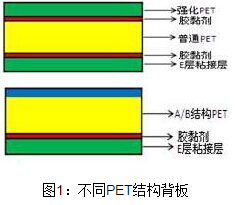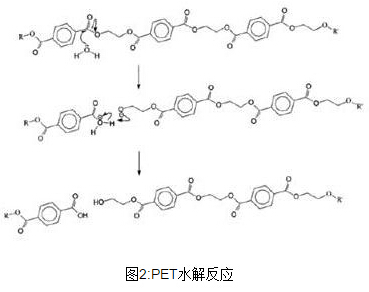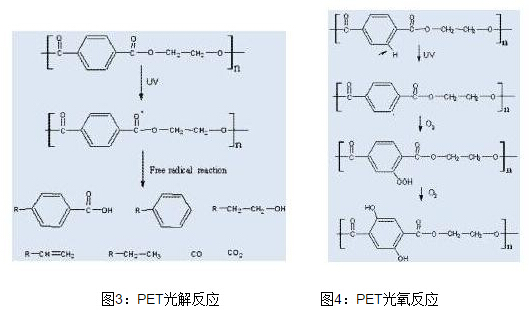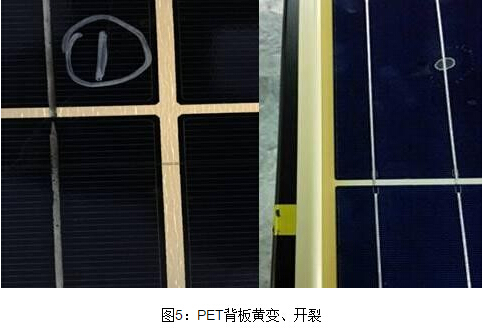As a key component of the crystalline silicon solar module, the backplane plays an important role in the safety, service life, and power attenuation of the module. To achieve the purpose of protecting the battery cells, the backplane must have good balance of mechanical strength and toughness, weather resistance, insulation, moisture barrier, and chemical resistance. The backsheets can be classified into two categories: fluorine-containing backsheets and non-fluorine-backed backsheets. There is consensus in the fluorine-containing films and fluorine-containing coatings for backsheet materials. Only fluorine-containing materials have been tested for a long time, including The market share of fluorine backsheet exceeds 90%. With the approaching of PV grid parity, there are tremendous pressures to reduce costs and improve efficiency in all aspects of the industrial chain. This is also the case for photovoltaic backsheets, which are the most important packaging materials for solar modules. In order to further reduce the cost of backplanes, some companies have tried to use PET materials instead of fluorine or fluorine coatings as the outermost layer of the backsheet, eliminating the cost of fluorine or fluorine coatings and lowering the price. But can non-fluorinated PET backsheets also meet component performance requirements? First, PET backplane structure and changes At present, PET backsheets mainly have the following two structures shown in Figure 1. The first is a three-layer structure, followed by a reinforced PET (50 μm), a common PET (150 μm), and an E-film adhesive layer. Adhesives are used between the layers. Bonding requires two composite processes. In order to further meet the cost reduction requirement of customers, PET can only be used as an article. The PET of A/B structure was born, and the difference between PET of A/B structure and ordinary PET is that it has a relatively clear two-layer structure. The general A/B structure has a PET total thickness of about 160um, a thin outer UV-resistant layer accounts for 10% of the total thickness, an inner layer of ordinary PET, a co-extruded A/B structure, and a PET inner recombination with an E-film or The PO film adhesive layer is transformed into a two-layered PET backsheet, which is simpler and thinner than the three-layer PET backsheet technology, and the selling price is therefore lower. And the total thickness is significantly reduced, especially the thickness of the PET layer in the UV-resistant layer is greatly reduced, and the reliability is also greatly reduced. Second, the aging mechanism of PET PET as a polymer material, its structure determines its prone to hydrolysis, UV degradation degradation, thermal aging degradation, the internal structure of the molecular chain oxidation, fracture, molecular weight, used in the outermost layer of the back panel is prone to surface Yellowing, chalking, embrittlement or even cracking. In order to improve its weather resistance, titanium-based inorganic pigments are generally added to the outermost PET layer to block UV intrusion. However, due to the combined action of light and water during outdoor use, the surface of PET is easily pulverized and whitened. Precipitation of titanium dioxide results in a decrease in the performance of PET structural backsheets. Hygrothermal aging of PET According to the analysis of failure mechanism of PET due to damp heat aging, PET is very easily hydrolyzed under high temperature and high humidity conditions. H2O molecules attack the ester bond, as shown in Figure 2, and the ester bonds are hydrolytically cleaved to generate carboxyl-containing oligomers. The carboxyl group also promotes the further progress of the hydrolysis reaction. PET is resistant to hydrolysis by increasing the degree of polymerization, increasing the molecular weight, decreasing the molecular weight distribution, and appropriately increasing the degree of crystallinity. With the continuous advancement of technology, PET produced by this method has a higher hydrolysis resistance level, and there is no embrittlement after PCT48h, and some can even achieve PCT60h or more. UV aging of PET backsheet From the failure mechanism analysis of PET by ultraviolet aging, the ultraviolet aging reaction of PET is divided into photolysis reaction and photooxidation reaction. In the photolysis reaction, PET undergoes radical rearrangement reaction, the macromolecular main chain breaks, and CO and CO2 are generated. Gas and other by-products, the mechanical properties of the material PET changes, such as tensile strength and elongation at break, as shown in Figure 3; in the photo-oxidation reaction, the aromatic ring of PET produces a hydroperoxide group, and further generate A phenolic hydroxyl group or diphenolic hydroxy derivative, PET yellowing is also mainly caused by these fluorescent products, as shown in Figure 4. Methods for enhancing the UV resistance of PET, such as the addition of UV-resistant formulations, including UV absorbers, UV stabilizers, and antioxidants, are synergistic. The addition of titanium *** can scatter and absorb some of the ultraviolet light; titanium *** and the stability of the system is poor, the two react with each other, it is easy to reduce the role of light stabilizers. Molecular transfer to the interface, hot spot evaporation, sublimation, rain erosion, UV aging, hygrothermal aging, thermo-oxidative aging, mold contamination, etc. The consumption rate of the auxiliary agent varies with the severity of the environment, and the additives are gradually pulverized with the PET surface. Consumption. III. Analysis of Outdoor Failure Cases of PET Backboard As shown in Figure 5 below, the appearance of PET backplane after outdoor service in western China for 6 years, serious yellowing on the front of the module and dense small cracks appearing in the gaps between the cells, and power and wet leakage test of the module. The results show that the power attenuation is as high as 27.6% and the wet leakage result is less than 40 MΩ·m 2 , which brings great losses of profits to investors and also poses potential safety hazards for photovoltaic power plants. In fact, the aging mechanism of PET backing material in outdoor is similar to the UV aging mechanism of PET material analyzed above. Figure 6 is the Fourier infrared spectrum of PET polyester material and reinforced PET polyester material (HPET) after 200 kWh/m2 UV aging in the laboratory. After UV aging, the absorption peaks of PET polyester decomposition product, terephthalic acid monomer, appeared at the 1690 cm-1 absorption peak of the two PET materials, which indicates that the PET polyester material has broken molecular segments after long-term ultraviolet aging. The phenomenon also appears in the above-mentioned six-year outdoor service PET backplane, as shown in Figure 7. Therefore, the PET polyester back sheet material occurs in the photolysis reaction and photothermal reaction in the outdoor, and UV aging should be used to evaluate its outdoor aging. Fourth, the choice of back plate should return to its original intention PET materials have long been used as the backbone of backplanes due to their excellent insulating and water-blocking properties. However, through the above failure mechanisms and cases, we have found that the properties of PET materials alone cannot guarantee the independent existence of component protection for 25 years, and even fail to meet components. The 10-year material warranty requirements for the backplane must be protected by the fluorine material in order to solve its short-lived wet heat properties, which is why the fluorine-containing backsheet has occupied the market for a long time. For PV power plant investors, the premise of measuring project income is to choose the material that best guarantees the return on investment of their projects. The cost reduction based on safety and reliability is the real cost reduction. Nylon PA extrusion backplane cracking has caused huge losses for some companies in the industry. Blindly selecting PET backplanes will create new hidden dangers for photovoltaic systems based on long-term benefits. It is preferable to have a long-term outdoor demonstration and insist on the quality of the material is the biggest guarantee for the investment return of the power plant. Baoji zhipu non-ferrous metal processing co., LTD., with advanced cold rolling equipment, the company has domestic, a number of experienced senior engineers, lift the main processing single crystal furnace, vacuum furnace, furnace, such as sapphire molybdenum, tungsten, tantalum, niobium hot accessories processing, domestic use of the best quality raw materials, equipped with advanced equipment and professional production team, welcome to inquire, looking forward to your cooperation! Molybdenum Net Heating Element Molybdenum Net Heating Element,Wholesale Molybdenum Net Heating Element,Industrial Molybdenum Net Heating Element,Good Stability Molybdenum Net Heating Element Baoji Zhipu Non-Ferrous Metals Processing Co., Ltd. , http://www.czpmow.com




PET backboard, innovation or "creative"?
